If you’ve spent time with anglers or reading fishing-related content, you’ve likely heard about trolling. Although not everyone’s preferred fishing technique, there are some definitive advantages to trolling for fish; however, much like the other techniques, your gear is critical to successful trolling. So, to help new anglers, we’ll investigate what size rod is best for trolling.
Most anglers who troll prefer to use rods that are between 5 and 9′. Rods within this range provide anglers with sufficient versatility. The exact size you choose within this range relates to several criteria, including your size and strength, the boat you’re trolling from, and the target species.
While trolling might seem simple to the casual onlooker, the understanding and technique required to effectively catch fish are as important as the type of fishing rod used. But are 5’ to 9’ rods always the best for trolling? Why is this range ideal, and what other variables make the best trolling rods?”
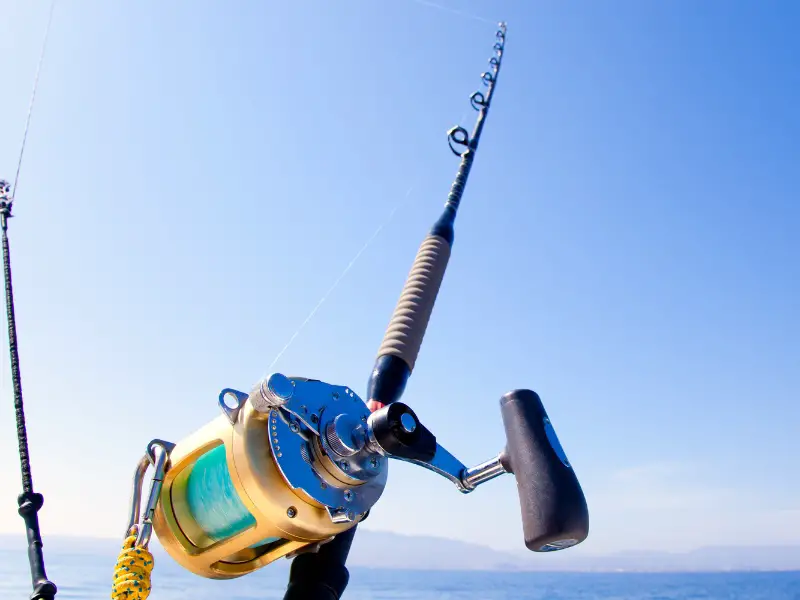
How Does Rod Length Influence Your Trolling Success?
Trolling is a fantastic fishing method for anglers to cover as much “ground” as possible by pulling one or multiple lines behind a vessel at various depths. While trolling is frequently used in deep sea settings, trolling behind a kayak in a river/on a lake is equally feasible.
When trolling in deep seas areas (and targeting larger fish species), anglers opt for longer rods which are often heavier, thicker, and made of more durable materials. Additionally, a longer rod allows anglers to carry more line (on a larger reel), which is non-negotiable when trolling for larger fish.
Although good quality trolling rods vary between 5 and 9’, the most effective rods are between 5 and 8’.
Why 5’ to 8’ Is The “Sweet Spot” for Trolling Rods
Rods between 5 and 8′ are ideal for trolling because they provide enough rod length, and they are usually thicker and more durable than shorter rods but are still a manageable length.
Longer rods put more space between your vessel and where the fishing line enters the water, which is particularly important for trolling next to the vessel (as opposed to off the back) or if you have timid fish.
I.e., if you’re on a canoe or kayak and you put the rod over the side, a longer rod means you’ll have less chance of tangling your paddle up in the line.
While this range is useful for general trolling, anglers may opt for longer rods depending on what fish they intend to catch.
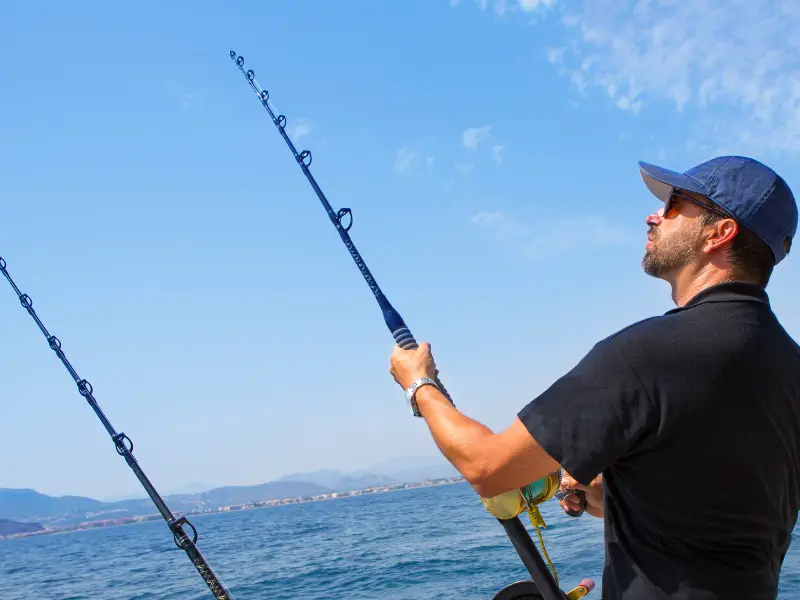
Longer Vs. Shorter Trolling Rods
Ultimately, rod length is a personal preference; but many anglers agree that rods over 9’ become too cumbersome to handle on smaller vessels for most (generalized) trolling.
While longer rods are ideal for baitcasting rods (to get behind the breakers during surf fishing), you don’t need to cast as far when trolling.
However, you’ll find trolling rods up to 13’. These rods are usually designed to target specific fish deeper in the water column. A longer rod allows the angler to pull up with more force from deeper down (thanks to better leverage).
Longer rods also give anglers more room to work around the boat and in the water.
At the other end of the spectrum, trolling rods are usually not less than 5′. Shorter rods are too thin and not as durable. They also lack the leverage to pull fish up from deeper down.
Shorter trolling rods are more responsive in shallower water, provide better casting accuracy, and are more manageable on a smaller vessel.
Factors Which Influence The Best Rod Length For Trolling
While most trolling rods are 5 to 9’, there are instances where a longer rod is more beneficial. The significant determining factors of how long of a trolling rod you need are the type of fish species you’re targeting, where you’re fishing, and how (the vessel type, season, bait vs. lure, etc.).
Where And How You’re Fishing Determines Trolling Rod Length
Although it goes without saying, shallow water and trolling from a small vessel usually require shorter rods.
Handling a 13′ rod on a canoe or kayak is more challenging than beneficial. Additionally, fishing on a shallow lake or river won’t require as long a rod as a deep lake or offshore fishing.
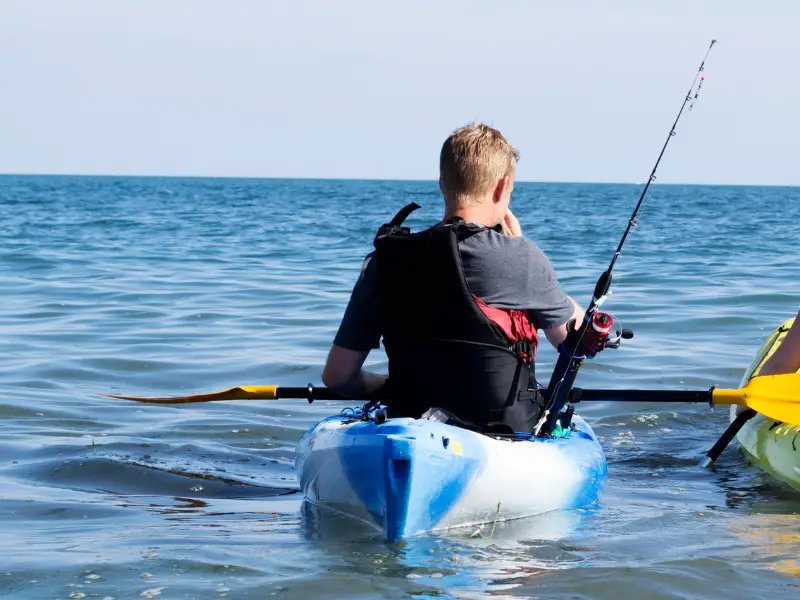
The Target Fish Species Determines Trolling Rod Length
The target fish species is the most decisive determining factor for rod length while trolling. Different fish put up varying levels of fight, live at different depths, and require specific hook presentation (even while trolling).
The table below examines popular trolling species and their preferred rod lengths.
| Fish species | Rod length | Notes |
| Amberjack | 7 to 8’ | Amberjacks are big, strong fish that snap rods and break inferior reels. |
| Bass | 7’4” to 7’6” | Crankbaits are highly effective when bass sit lower in the water column. |
| Crappie | 10 to 13’ | Spider rigging requires longer rods. These rods are usually stiff and remain in the holders most of the time. |
| Mackerel | 7 to 8’ | These fish move under the boat, so a longer rod helps prevent tangling up with the propeller. |
| Marlin | 5’6” to 8’ | You can catch marlin while standing (with shorter rods) or in a fighting chair (with longer rods). |
| Salmon | 9 to 10’6” | Salmon are usually lower in the water column, and longer rods are necessary for bringing them up. |
| Shark | 5’6” to 9’ | Sharks come in various sizes. |
| Swordfish | 5’6” to 8’ | Swordfish migrate up and down the water column following baitfish. |
| Tarpon | 7 to 8’ | These strong fish need heavy-rated rods to handle the fight. |
| Trout | 7’6” to 8’ | Longer rods put your bait further away from the boat, increasing the likelihood of a trout biting. |
| Tuna | 5’6” to 6’6” (up to 8’) | Shorter rods are better for stand-up fishing, while longer rods are more practical for a fighting chair. |
| Wahoo | 5 to 6’ | Although these rods are shorter, they are usually thick and rated heavy. |
| Walleye | 7 to 8’6” | These fish are often caught on down-rigging rods. |
Your Physical Size And Capabilities Influence The Ideal Rod Length
Your size and physical ability are equally important to where you fish and what you’re targeting.
Generally, taller, stronger individuals benefit from longer rods, while those under 6’ and less physically inclined benefit from shorter rods.
While this is not a hard and fast rule, it is a helpful guide if you’re starting as an angler and something worth keeping in mind. If the rod is too big, you will not be as effective in catching fish.
Other Essential Characteristics Of The Best Trolling Rods
Aside from the rod’s length, other essential characteristics determine its effectiveness at trolling, including the construction material(s), power, and action.
Trolling rods are usually made from composite materials (a mixture) or fiberglass. While carbon fiber is strong, it tends to be more brittle than fiberglass or composite rods. These rods need to be strong enough to fight against the pull of the water and the fish fighting on the other side.
Trolling rods are usually medium to heavy power to cope with the stress they undergo. Although some species benefit from a fast-action rod, most anglers prefer a moderate-action rod, which prevents the hook from ripping out of the fish’s mouth.
Conclusion
While there is no one best trolling rod size, the ideal range is between 5 and 9′. This length of Rods provides sufficient leverage for pulling up strong fish from deep underwater while remaining small enough for easier management. However, there are instances where a longer rod is necessary. The best rod length depends on the type of fish, where you’re fishing, what vessel you’re using, and your physical capabilities.
- Do You Need An Indicator For Nymph Fishing? - November 16, 2023
- Fishing Safety Tips For Families - September 25, 2023
- What Is The Best Time To Night Fish At A Lake? - September 18, 2023

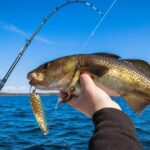
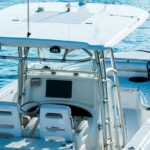

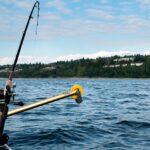
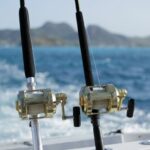


![Types of Fishing Rods [A Guide For Beginners] types of fishing rods](https://irvinelake.net/wp-content/uploads/2022/10/types-of-fishing-rods-1-150x150.png)